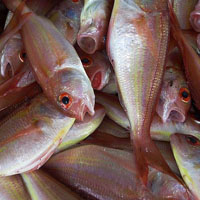 Smart Citations
Smart CitationsSee how this article has been cited at scite.ai
scite shows how a scientific paper has been cited by providing the context of the citation, a classification describing whether it supports, mentions, or contrasts the cited claim, and a label indicating in which section the citation was made.
Determination of heavy metals and selenium contents in fish meat sold at Erbil City, Kurdistan Region, Iraq
Food contamination with heavy metals may pose a serious threat to human health. Fishes are the most common seafood globally. This study aimed to evaluate the levels of heavy metals in different fishes sold in Erbil city markets. The targeted heavy metal elements were cadmium (Cd), chromium (Cr), cobalt (Co), copper (Cu), lead (Pb), mercury (Hg), manganese (Mn), nickel (Ni), selenium (Se), and zinc (Zn). Seventeen dorsal meat samples were digested and subjected to metal analysis by Inductively Coupled Plasma Optical Emission Spectrometry. Co, Mn, Cu and Se were detected in all samples, while cadmium was below the detectable level in all samples. The average concentrations of targeted trace elements were 0.03±0.016, 0.02±0.03, 0.07±0.08, 0.10±0.08, 0.03±0.03, and 2.90±3.33 mg/kg for cobalt, chromium, copper, manganese, nickel, and zinc, respectively. Lead was only found in one sample (5.88%). On the contrary, mercury was detected in all samples but in low concentration (0.14±0.07). All detected heavy metals with specified permissible limits by FAO/WHO were significantly lower than the permissible limits. Based on detected levels of targeted heavy metals, consumption of such fish has no potential risks to human.
Downloads
How to Cite
PAGEPress has chosen to apply the Creative Commons Attribution NonCommercial 4.0 International License (CC BY-NC 4.0) to all manuscripts to be published.

 https://doi.org/10.4081/ijfs.2020.8753
https://doi.org/10.4081/ijfs.2020.8753





